9 Types of Black Birds In Oregon (With Pictures)
Last Updated on
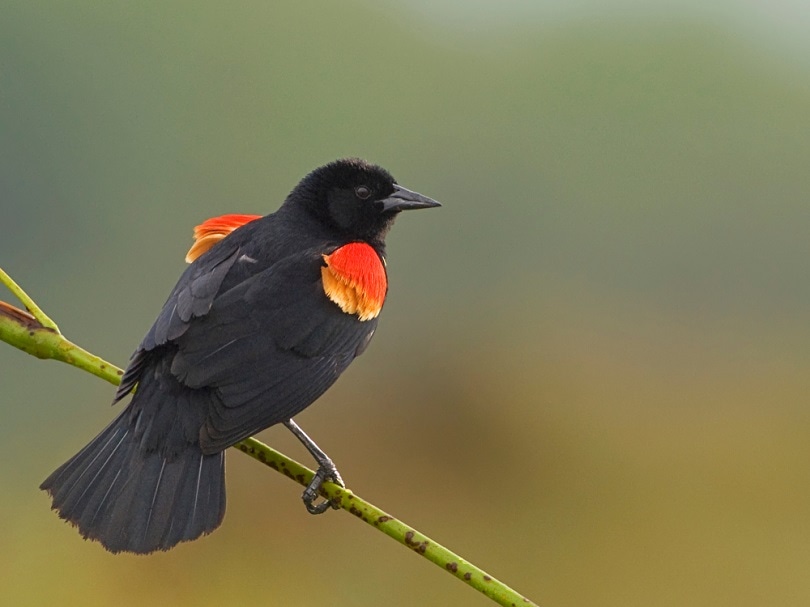
Black birds can be hard to distinguish from one another. Black feathers are often very pretty due to their glossy appearance and good contrast with other brighter colors. However, black birds flying and flitting around can be hard to identify. The good news is, despite being defined by a mostly black coloring, these birds all feature a host of unique identifiers that can be learned.
Oregon is home to many different and distinct species of black-colored birds. Here are nine of the most common black birds in Oregon, plus identifying features that will make them easy to spot and call out in the future.

Top 9 Black Birds in Oregon:
1. Brewer’s Blackbird
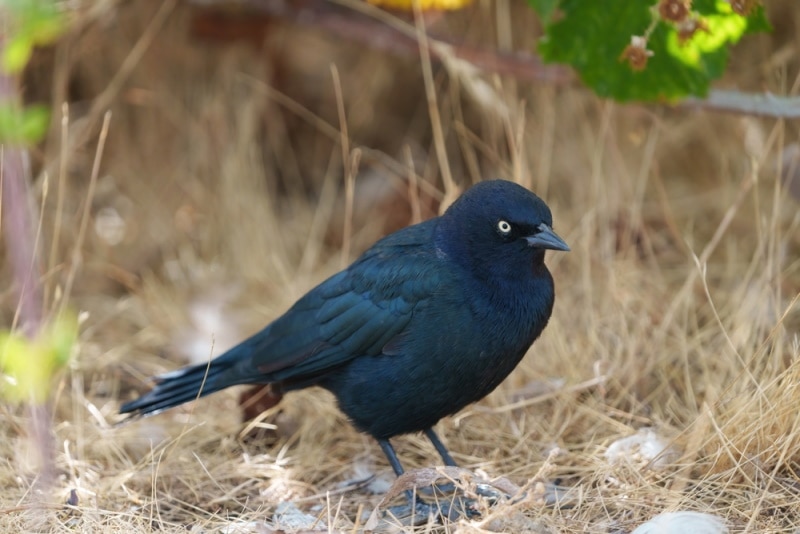
| Scientific name: | Euphagus cyanocephalus |
| Size: | Medium |
| Distinctive feature: | Bright yellow eyes |
Brewer’s blackbird is a species common to Oregon and can be spotted throughout the state year-round. These birds are ground foragers and are often seen hopping along sidewalks, in parks, and perched on fence posts. The bird has a beautiful black glossy coat that blends all of the best colors for dark feathers. The males have piercing yellow eyes that are more akin to a cat’s eye than a bird’s eye.
If you spot a shiny black bird in a populated area of Oregon and it looks back at you with a bright yellow gaze, it is likely an example of Brewer’s blackbird in the wild. If you want to attract these birds to your home, you can spread seeds on the ground or use an open platform feeder. Brewer’s blackbirds love to eat from bird feeders, but their size and long legs make it hard for them to perch on traditional feeders.
2. Red-winged Blackbird
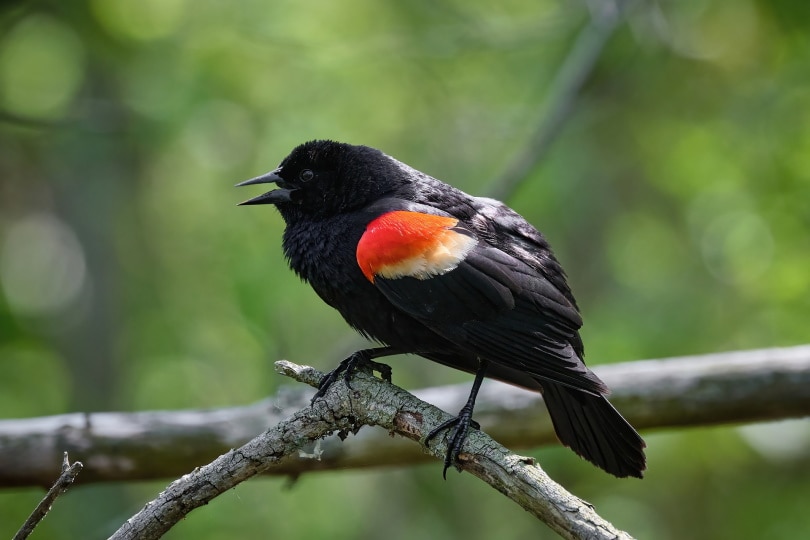
| Scientific name: | Agelaius phoeniceus |
| Size: | Medium |
| Distinctive feature: | Bright red wings on males; muted red wings on females |
Red-winged blackbirds are extremely popular throughout the United States. These lively birds can be found in Oregon year-round and are defined by their classic shape and red wings. The male birds have a very dark coat of feathers that contrast sharply with the vibrant red wings.
The females are brown and are harder to identify. The female’s average brown coloring and muted wings make the red coloring harder to spot though it is still there if you look closely. Red-winged blackbirds are ground foragers so if you want to attract some of these beautiful birds to your yard, you should spread seed on the ground with hopes of attracting a migrating flock for a pitstop.
3. European Starling

| Scientific name: | Sturnus vulgaris |
| Size: | Medium |
| Distinctive feature: | Star-like shape while in flight |
European starlings can be found throughout North America. They range as far north as Alaska and as far south as Mexico and the Bahamas. This large territory also includes Oregon, where these birds can be found in abundance. European starlings get their name from a distinctive four-point shape that they make while in flight. They are stout birds with long beaks and short wings and tail feathers.
European starlings typically travel in large groups and are very noisy when they get agitated or excited. It is easy to attract European starlings to an average backyard bird feeder. The birds generally appear in large groups that can swarm a yard or field.
4. Yellow-headed Blackbird
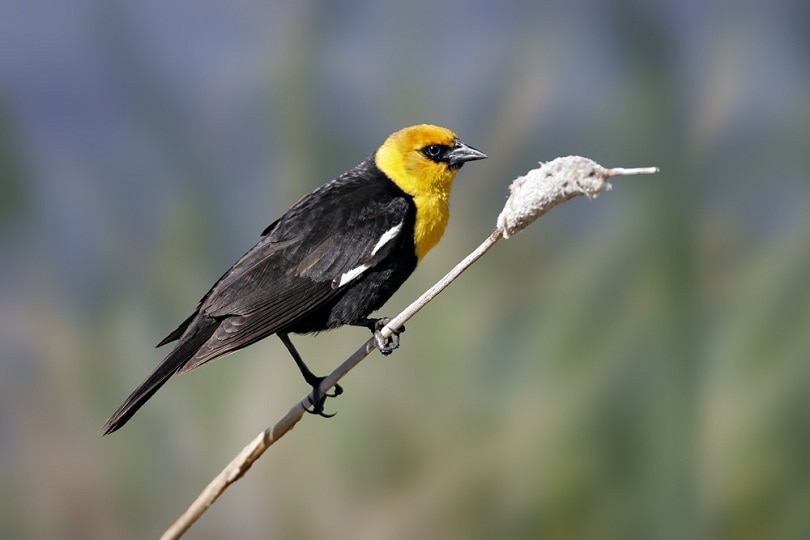
| Scientific name: | Xanthocephalus xanthocephalus |
| Size: | Medium |
| Distinctive feature: | Bright yellow head and throat |
Yellow-headed blackbirds provide striking color contrast. They have black bodies and bright yellow heads. The distinction is much more prevalent in male birds whose heads are entirely yellow. The females have more black on the back of their necks and up through the crest than the males, but they still boast yellow faces. These unique birds can be found in Oregon during the spring breeding seasons but remain entirely east of the Cascade Mountains.
These birds do not venture over the mountains into the coastal regions, so your best bet on spotting one is in the flat rural fields of eastern Oregon. Yellow-headed blackbirds love sunflower seeds and will frequent feeders that are well stocked with this tasty seed as long as the season is right.
5. Brown-headed Cowbird
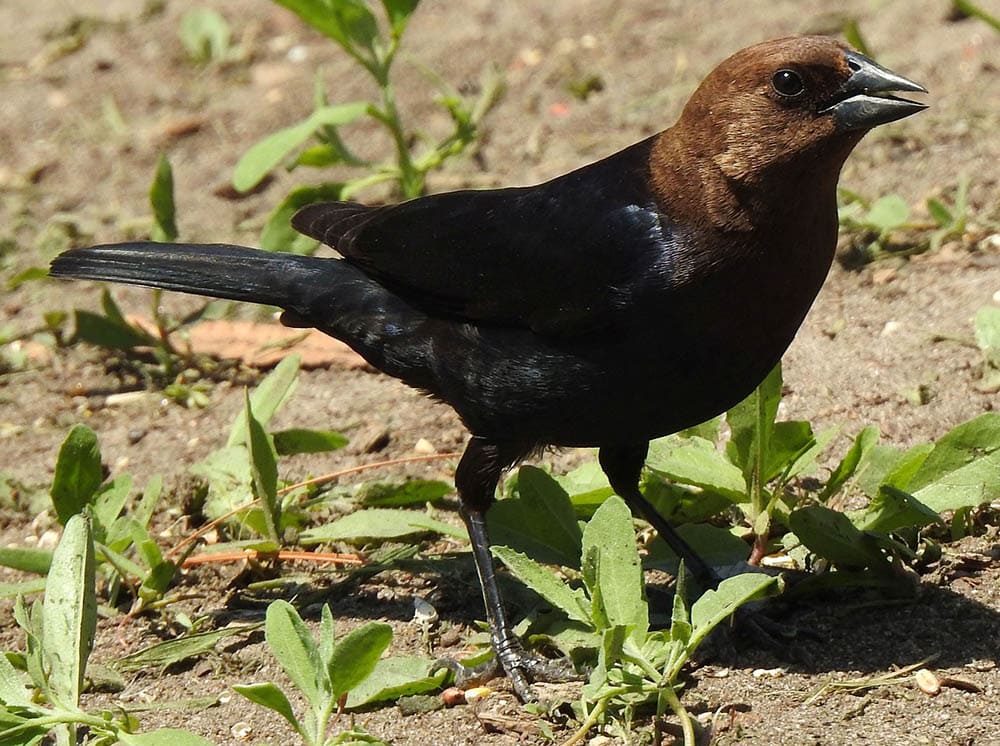
| Scientific name: | Molothrus ater |
| Size: | Small |
| Distinctive feature: | Males have chocolate brown heads |
The brown-headed cowbird is a small songbird that can be found throughout Oregon. The bird is named and known for the fact that the males have a striking iridescent black body with a plain brown head. At first glance, it can look like the bird is bald. The brown head makes these males easy to distinguish from other similarly sized and shaped songbirds. The females do not have such a defining feature.
However, the females of this species are unique in that they do not build their own nests. When it is time to lay eggs, the female chases off birds from their own nests, usually targeting smaller songbirds and moving in. This way, she can lay more eggs by not spending time or energy building a nest. These birds can be found year-round in Oregon’s wet coastal regions and migrate to breed in eastern Oregon.
6. Tri-colored Blackbird

| Scientific name: | Agelaius tricolor |
| Size: | Medium |
| Distinctive feature: | Red and white stripes on the wings |
The tri-colored blackbird is named for its color pattern. The males are almost entirely black with red and white stripes on the wings. The females are dappled and feature brown, white, and black in their feathers. These birds are endangered and spotting them can be a chore for even the most avid bird watchers.
They can still be found in Oregon year-round, but their habitats have been reduced to sparse pockets rather than a large coverage. Climate change, deforestation, and human development have decreased the numbers of these gorgeous birds throughout Oregon. Tri-colored blackbirds are frequently mistaken for red-winged blackbirds, but these birds have a different shape and are much harder to find in the wild than their counterparts.
7. American Crow
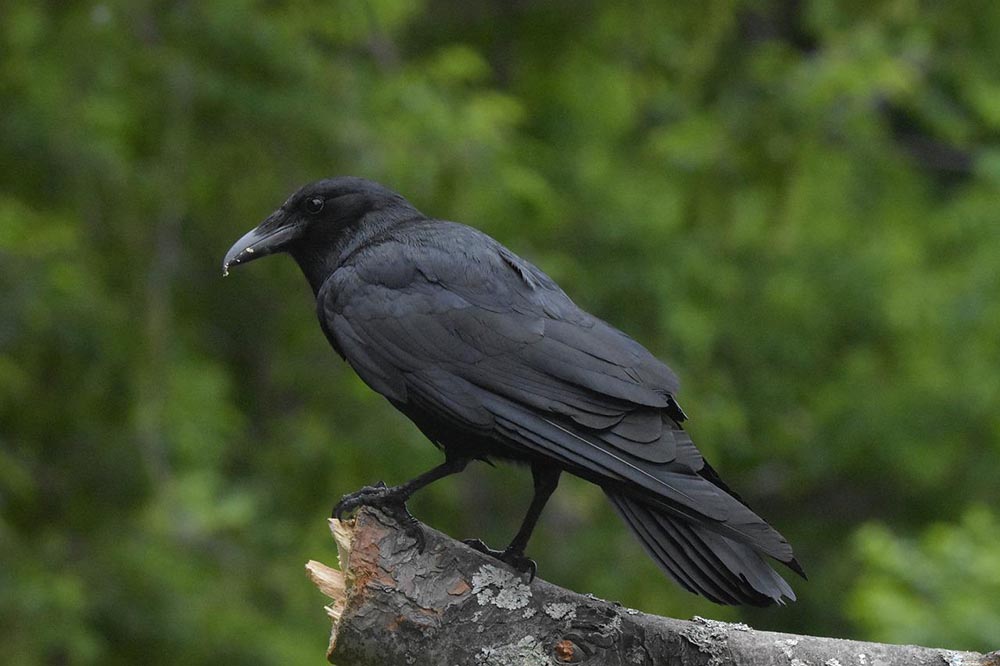
| Scientific name: | Corvus brachyrhynchos |
| Size: | Large |
| Distinctive feature: | Loud caw; large body |
American crows are not everyone’s favorite bird, but they are a common sight throughout the United States, including Oregon. They can be found as far south as Florida and as far north as Alaska. These birds are large and often make their presence known through loud distinctive calls. American crows typically avoid bird feeders, but on the off chance you want to attract some to your yard, they love peanuts.
Having trees sitting over open grass is also a great attractor for crows. Crows are not the prettiest birds, but they are one of the most prevalent, black-colored birds in Oregon. They can be found in rural areas hanging around farms as well as urban areas where they can occasionally be spotted eating garbage.
8. Bullock’s Orioles

| Scientific name: | Icterus bullockii |
| Size: | Medium |
| Distinctive feature: | Orange bellies and white wing spots |
Bullock’s orioles are beautiful birds that are a treat to see. They have gorgeous yellow and orange bodies with a solid black back. You can pick out Bullock’s orioles by their distinctive white patches found on their wings. These birds are extremely migratory, and they do not like to stay in one place for long. They spend their breeding seasons in Oregon and the surrounding areas, but after they are done breeding, they migrate south, where they spend the rest of their time in Mexico.
The southwestern United States is a migratory zone for these gorgeous orioles. Bullock’s orioles do not like to eat from bird feeders, but they are always looking for energy for their long migrations. If you want to attract these birds, you will need to use a sugary mixture similar to hummingbird food. They like the sweetness but avoid seeds.
9. Great-tailed Grackle

| Scientific name: | Quiscalus mexicanus |
| Size: | Medium-Large |
| Distinctive feature: | Large V-shaped tail |
The great-tailed grackle is, unsurprisingly, named for its great tail. The tail of this bird is nearly as long as its body, and it folds neatly into a very distinctive V while they are perched. This is a large bird with a sleek black coat and long legs. It is extremely rare to spot them in Oregon, but it has happened.
The best chance to see great-tailed grackles regularly is in the very bottom southeastern corner of the state. They are common throughout the southwestern United States, including in nearby Nevada. They can range as far south as South America and can sometimes be spotted in Oregon during nesting season or during the summer when the weather is the warmest. If you are interested in rare birds, keep your eye out for the great-tailed grackle when you are bird watching in southern Oregon.

Final Thoughts
There are many unique birds sporting black feathers throughout Oregon. Some of these birds are small and dainty, while others are large and stocky. Some birds can only be found in Oregon for part of the year, while others call the state home all of the time. Unfortunately, some birds are becoming rarer and harder to find but can still be found in Oregon if you know where and when to look. All of these birds offer something different to the curious. Some can be baited with simple bird feeders, while others might take a hardcore bird watcher on a years-long quest to spot them in the wild.
See also:
Featured Image Credit: Agami Photo Agency, Shutterstock
About the Author Robert Sparks
Robert’s obsession with all things optical started early in life, when his optician father would bring home prototypes for Robert to play with. Nowadays, Robert is dedicated to helping others find the right optics for their needs. His hobbies include astronomy, astrophysics, and model building. Originally from Newark, NJ, he resides in Santa Fe, New Mexico, where the nighttime skies are filled with glittering stars.
Related Articles:
How to Collimate Binoculars: 9 Expert Tips
Monocular vs Telescope: Differences Explained (With Pictures)
10 Types of Hummingbirds in Arkansas (With Pictures)
8 Types of Hummingbirds in Nebraska (With Pictures)
5 Types of Hummingbirds in Idaho (With Pictures)
3 Types of Hummingbirds in Mississippi (With Pictures)
8 Types of Hummingbirds in Kansas (With Pictures)
5 Types of Hummingbirds in West Virginia (With Pictures)
